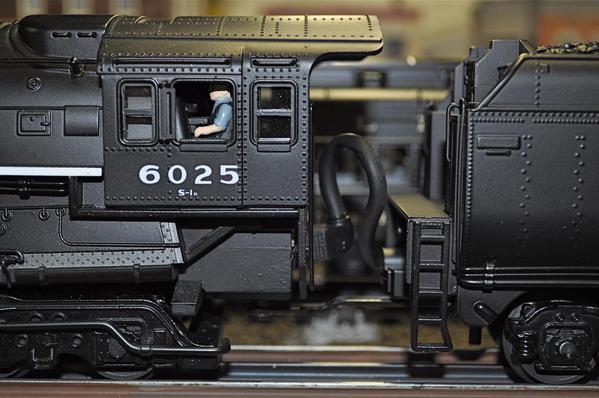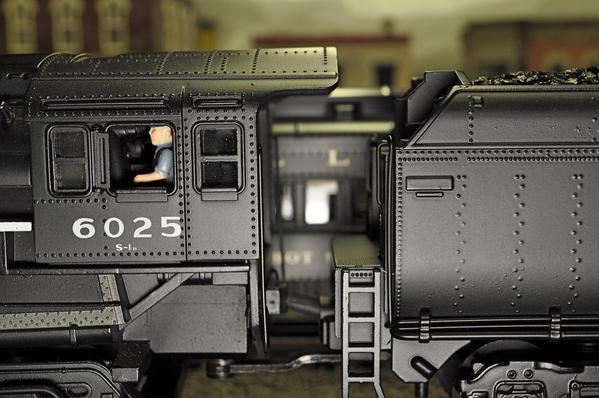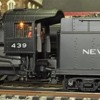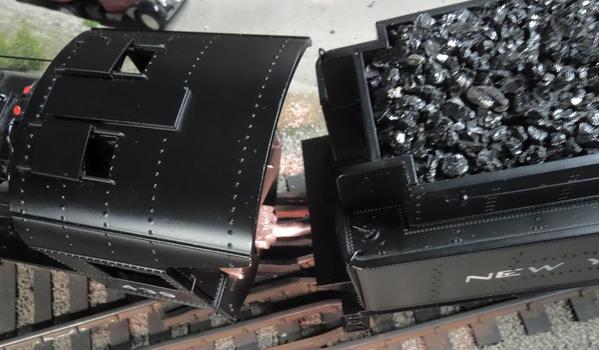A few weeks ago the subject of replacing the MTH 90 degree steam tethers came up. I had picked up a few 10 pin straight tethers primarily for TMCC upgrades when more than 6 wires were needed. After thinking of the benefits of a straight tether on my NYC Niagara I decided to try it. It was pretty straight forward as the BC-0000217 uses the same wire colors as the original. Just cut, strip, and splice. I also opened up the tunnel in the tender on my mill to allow freer movement. Switching to the straight tether also allowed closer coupling as the tether was no longer in the way.
Here is the before and after:
I soon realized with the tether out of the way I could install a deck apron.
Using some Precision Scale diamond plate and brass hinges I came up with this. Not many, if any at all, use barn door hinges but I noticed on many of the engines at the PRR Railroad Museum this is exactly what was used. The small strip was added to fill in the step in the MTH cab, maybe a nod to the fact that the prototype's cab actually extended well beyond the engine deck on the prototype.
Here is the apron after assembly and installation.
Finally some pics with the engine together with the tender.
I may have to order some more of those tethers and finish off the rest of my wired tethered engines.
Pete































